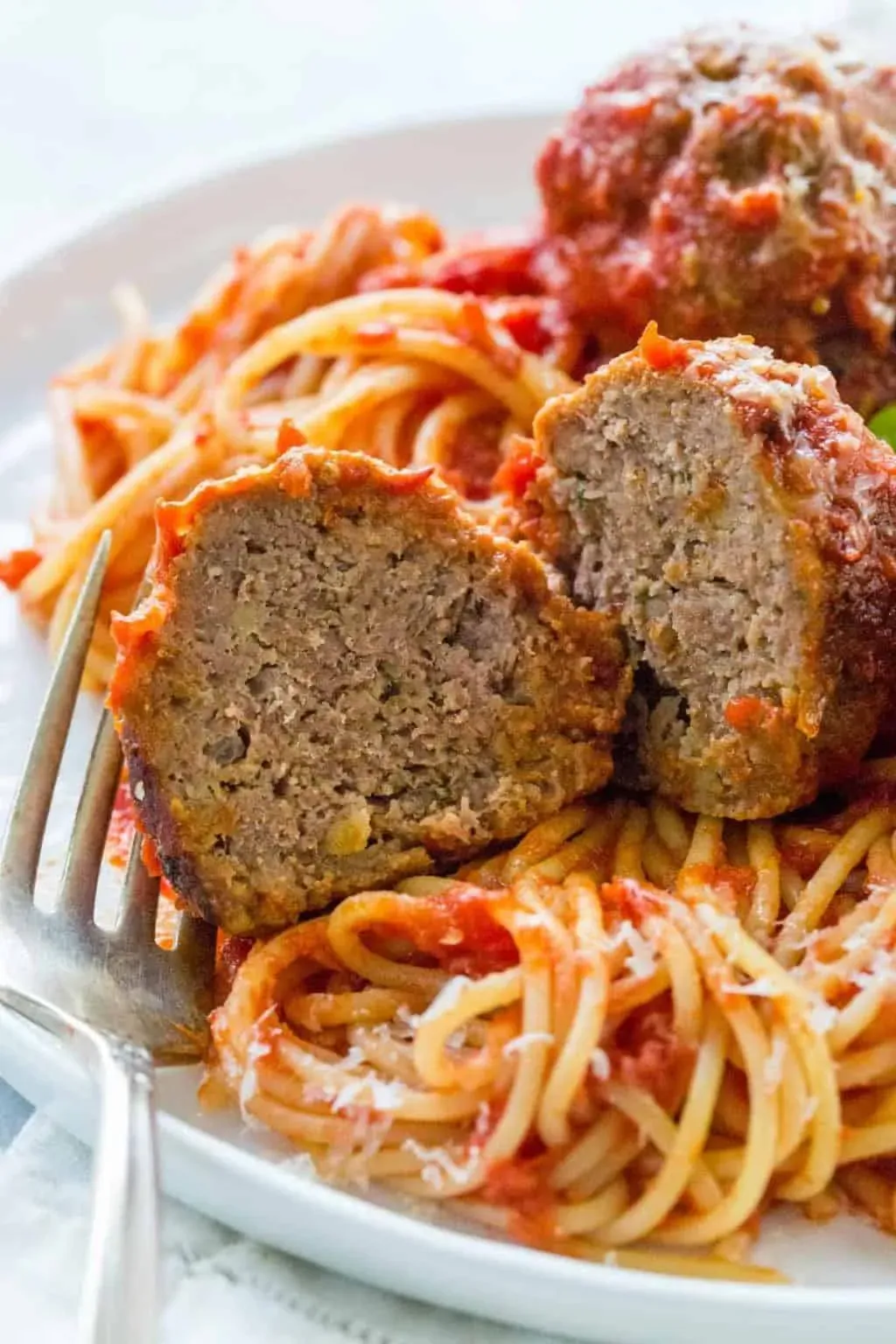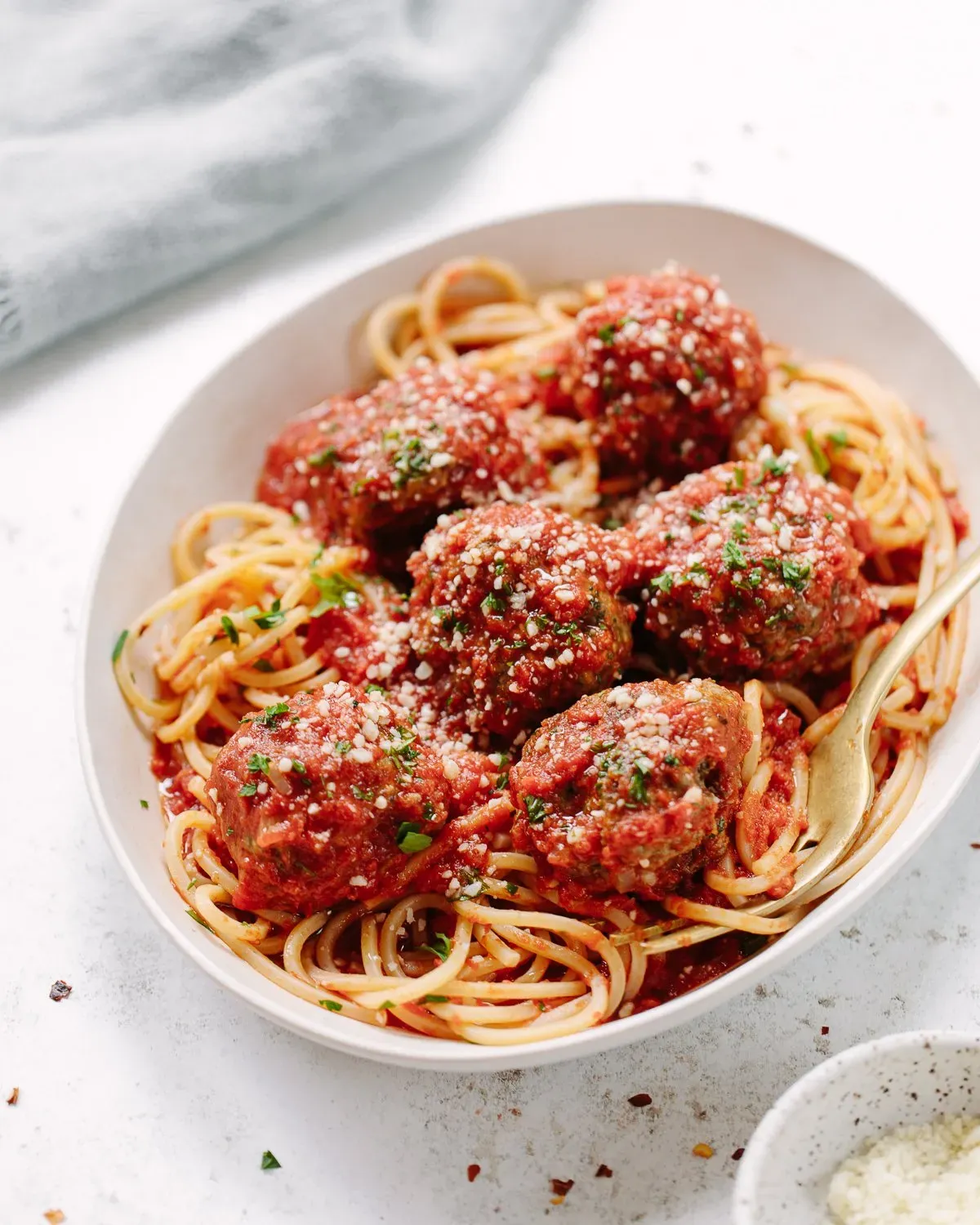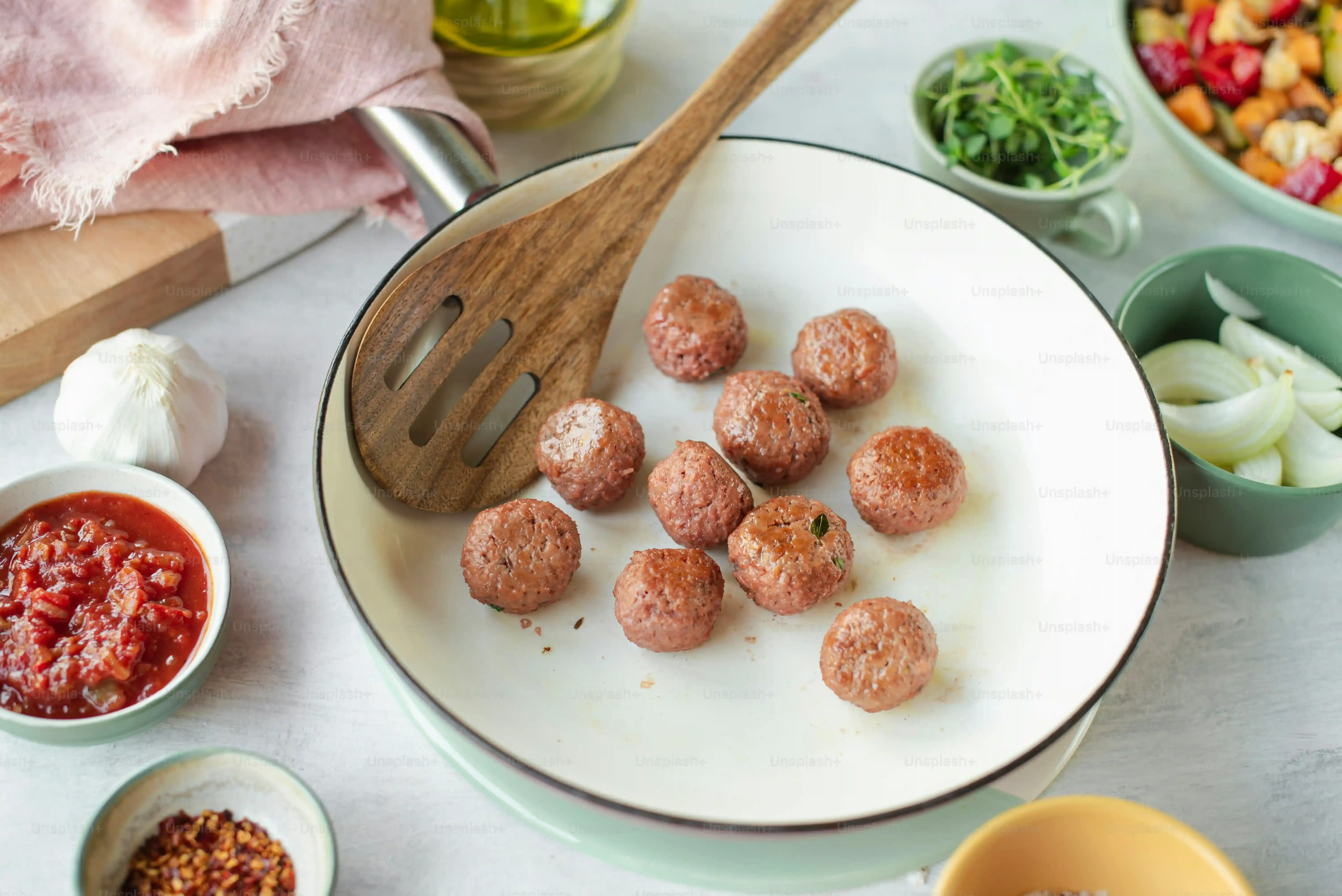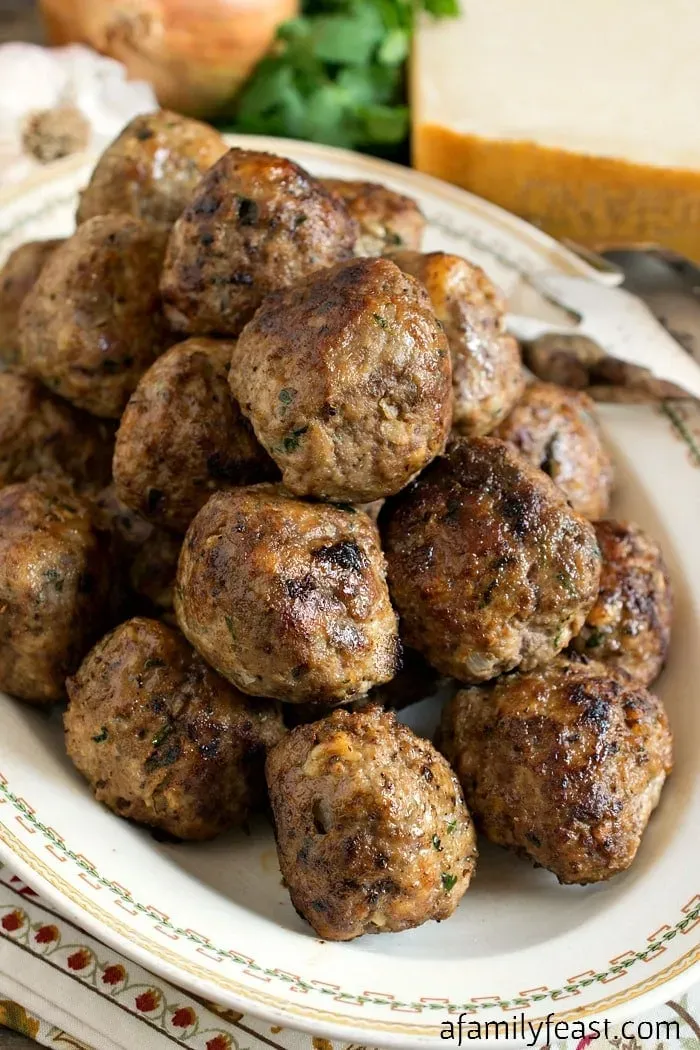Table of Contents
Let's be honest. You've probably had some sad meatballs in your life. Dry, tough, maybe tasting like a bland puck of mystery meat? It's a common tragedy in kitchens everywhere. Making a truly great italian style meatball recipe isn't just about mixing ground meat and calling it a day. It's an art, or maybe just knowing a few simple tricks that make all the difference.
Why Your Meatballs Fall Apart (And How to Fix It)

Why Your Meatballs Fall Apart (And How to Fix It)
The Binding Problem: Too Much or Too Little
so you've mixed up your meatball ingredients, rolled them, and tossed them into the pan, only to watch them disintegrate into a sad, meaty crumble. What gives? One of the biggest culprits is the binder. Think of it like the glue holding the party together. Too much binder, like excessive breadcrumbs or cheese, can make them dense and prone to cracking. Not enough, and well, there's nothing to keep them from falling apart when they hit the heat.
It's a delicate balance. You need just enough moisture and starchy goodness from things like bread soaked in milk (a "panade," if you want to sound fancy) or breadcrumbs and eggs to bind the meat proteins together without turning the mix into a paste. Get this wrong, and you're not making meatballs; you're making ground meat confetti.
Overworking and Under-Chilling
Another common mistake? Treating the meat like pizza dough. Overmixing develops the proteins in the meat, making it tough and squeezing out moisture. This creates internal stress points, leading to cracks and eventual collapse during cooking. You want to mix until *just* combined, like you're folding ingredients together, not kneading them.
Also, skipping the chill step is a rookie error. Letting the formed meatballs sit in the fridge for at least 20-30 minutes helps them firm up. The fat solidifies slightly, and the ingredients meld together. This structural integrity is crucial before they face the heat of a skillet or simmering sauce. Trying to cook warm, loosely formed meatballs is basically asking for them to fall apart.
Here are some common pitfalls and how to avoid them:
- Too dry mix: Add more liquid (milk, broth) to your panade or mix.
- Too wet mix: Add a touch more breadcrumbs or cheese to absorb moisture.
- Overmixing ingredients: Mix gently with your hands until just combined, no more.
- Not chilling: Always chill formed meatballs for at least 20 minutes before cooking.
- Wrong fat ratio: Use a mix of meats (like beef and pork) to ensure enough fat for moisture and binding.
The Foundational Italian Style Meatball Recipe: Ingredients That Matter

The Foundational Italian Style Meatball Recipe: Ingredients That Matter
It Starts With the Meat
let's talk protein. You wouldn't build a house with flimsy wood, right? Same goes for your italian style meatball recipe. Using just one type of lean ground meat, like 90% lean beef, is a recipe for dry, sad meatballs. You need fat. Fat equals flavor and moisture. A classic approach uses a mix, often beef and pork. Sometimes veal gets invited to the party for extra tenderness, but beef and pork is the reliable duo.
Aim for something around an 80/20 blend (80% meat, 20% fat) across your total mix. If you're buying pre-ground, grab an 80/20 beef and pair it with ground pork. The pork brings a different kind of tenderness and richness. This blend is the backbone of a truly succulent italian style meatball recipe.
The Binder Brigade: Bread, Milk, Eggs, and Cheese
Now for the stuff that holds it all together and keeps it moist – the binders. This isn't just filler; it's crucial for texture. The old-school method involves soaking stale or fresh bread (crusts off, please) in milk. This creates a "panade" – essentially a bread paste. It adds moisture and tenderness in a way dry breadcrumbs just can't replicate as effectively.
Eggs act as a secondary binder, helping to emulsify the fat and liquid and holding everything tight, but not *too* tight. And cheese? Parmesan or Pecorino Romano isn't just for flavor (though it adds plenty of that); it contributes a little binding power too, thanks to its protein and fat content. Getting the ratio of panade, eggs, and cheese right is key to avoiding those dense, rubbery or crumbly outcomes we discussed earlier. It's the unsung hero of a great italian style meatball recipe.
- 80/20 Ground Beef
- Ground Pork (equal part to beef, or slightly less)
- Stale or Fresh White Bread (crusts removed)
- Whole Milk
- Large Eggs
- Parmesan or Pecorino Romano Cheese (finely grated)
- Fresh Parsley
- Garlic
- Salt and Black Pepper
- Optional: Pinch of red pepper flakes
Herbs, Garlic, and Seasoning Sense
Meatballs shouldn't taste *just* like meat. They need brightness and depth. Fresh parsley is non-negotiable in a classic italian style meatball recipe. Chop it fine and be generous. Garlic is also essential, but decide if you want it minced raw for a sharper bite or gently sautéed for a softer, sweeter flavor before adding it to the mix. I usually mince it raw, but make sure it's *very* fine so you don't get big chunks.
Salt and pepper seem obvious, but season correctly. Taste a tiny cooked bit of the mixture if you're unsure. A little pinch of red pepper flakes can add a subtle warmth without making things spicy. These simple additions elevate the humble meatball from merely okay to truly memorable, defining that classic italian style meatball recipe flavor profile.
Crafting the Perfect Italian Style Meatball Recipe Mix

Crafting the Perfect Italian Style Meatball Recipe Mix
Mixing for Tenderness, Not Toughness
you've got your beautiful pile of ingredients: the meat blend, the soaked bread panade, grated cheese, eggs, chopped parsley, minced garlic, salt, pepper, maybe a pinch of red pepper flakes. Now comes the critical step: bringing it all together. This isn't a dough you knead. Think of it more like folding a delicate batter. You want to use your hands – yes, get in there – and gently combine everything. The goal is to distribute the ingredients evenly without compacting the meat or overworking those proteins. Mix until everything is just incorporated and you no longer see distinct pockets of cheese or bread. Over-mixing is a direct route to tough, bouncy meatballs, and nobody wants that. This gentle approach is key to Crafting the Perfect Italian Style Meatball Recipe Mix.
Cooking Your Italian Style Meatball Recipe to Perfection

Cooking Your Italian Style Meatball Recipe to Perfection
Searing for Flavor and Structure
you've mixed and rolled your perfect little (or big) spheres for your italian style meatball recipe. Now it's time to cook them. Most people agree that searing them first is non-negotiable. Why? It builds flavor through the Maillard reaction – that lovely browning that makes food taste good. It also helps create a little crust, adding texture and, importantly, helping the meatball hold its shape when it hits the sauce later.
Heat some olive oil or a mix of oil and butter in a large skillet over medium-high heat. Don't crowd the pan! Cook them in batches if you need to. You're not cooking them through here, just getting a nice brown crust all over, maybe 3-4 minutes per side, turning gently. They'll still be raw inside, and that's exactly what you want.
Finishing Them Off: Sauce or Oven?
Once they're beautifully browned, you have a couple of options for finishing your italian style meatball recipe. The classic way is to simmer them gently in your marinara or tomato sauce. This method is fantastic because the meatballs absorb the flavor of the sauce, and the sauce gets enriched by the meatball juices. It's a beautiful exchange. Just nestle them into the simmering sauce, cover, and let them cook for 15-20 minutes, or until they're cooked through.
Alternatively, you can finish them in the oven. After searing, place them on a baking sheet and bake at around 350°F (175°C) for 15-25 minutes, depending on size. This method keeps them slightly firmer and works well if you plan to serve them without sauce initially, maybe as appetizers. But honestly, simmering in sauce is the way to go for maximum tenderness and flavor marriage.
- **Searing:** Use olive oil or a mix. Don't overcrowd the pan. Brown all sides.
- **Simmering in Sauce:** Gently place browned meatballs in simmering sauce. Cover and cook 15-20 mins.
- **Baking:** Place browned meatballs on a baking sheet. Bake at 350°F for 15-25 mins.
- **Check Doneness:** Cut one open – it should be uniformly cooked with no pink.
- **Rest:** Let them rest briefly before serving for juicier results.
Checking for Doneness and Resting
So, how do you know your italian style meatball recipe is perfectly cooked? The easiest way is to cut one open. It should be uniformly cooked through with no pink in the center. For larger meatballs, this is especially important. You can also use an instant-read thermometer; the internal temperature should reach 160°F (71°C). Don't overcook them, or they'll start to dry out, undoing all your hard work on the mixing stage.
Just like a steak or roast, meatballs benefit from a brief rest. Once they're done cooking, whether in sauce or baked, let them sit for a few minutes before serving. This allows the juices to redistribute throughout the meatball, resulting in a more tender and moist bite. Pull one out of the sauce, place it on a plate, and try not to eat it immediately. Patience, grasshopper.
Serving and Storing Your Italian Style Meatball Recipe Delights

Serving and Storing Your Italian Style Meatball Recipe Delights
Presenting Your Meatball Masterpiece
Alright, you've put in the work, avoided the pitfalls, and now you've got a batch of glorious, tender italian style meatball recipe beauties. How do you show them off? The classic move is undeniably over a pile of spaghetti, swimming in that rich tomato sauce they finished cooking in. Make sure you spoon extra sauce over the top, because a dry meatball on pasta is a culinary crime. Don't forget a generous dusting of fresh grated Parmesan or Pecorino Romano. It's like the final flourish on a painting.
But pasta isn't the only game in town. Meatballs are fantastic in a sub roll, piled high with provolone and baked until gooey. Or serve them as appetizers, maybe with toothpicks, for a party where people actually want to eat good food. They're also great alongside some crusty bread for soaking up that sauce. The point is, these aren't just ingredients; they're the star of the show. Treat them with respect, and your diners will thank you.
Keeping Those Leftovers Happy
Let's be real, sometimes you make a big batch of your killer italian style meatball recipe, and there are leftovers (though if you made enough, maybe not). Storing them correctly means you get to enjoy them later without a drop in quality. Once they've cooled down completely, transfer them and their sauce to an airtight container. They'll keep happily in the refrigerator for about 4-5 days. Reheating is simple: gently warm them up in their sauce on the stovetop over low heat, or in the microwave if you're in a hurry (though the stovetop is always better for texture).
Freezing is your friend if you want to stash some for longer. You can freeze them cooked in sauce – again, just transfer to a freezer-safe container or bag once cool. They'll last up to 3 months. Another option is to freeze the cooked (or even just seared) meatballs without sauce on a baking sheet first, then transfer to a freezer bag once solid. This prevents them from sticking together, so you can grab just a few at a time. Thaw them in the fridge overnight before reheating in sauce or warming through in the oven.
- **Refrigerator Storage:** Store cooked meatballs and sauce in an airtight container for 4-5 days.
- **Freezing Cooked:** Freeze in sauce in freezer-safe containers or bags for up to 3 months.
- **Freezing Separately:** Freeze seared/cooked meatballs on a baking sheet, then transfer to a freezer bag.
- **Reheating:** Gently warm in sauce on stovetop or in microwave.
- **Thawing:** Thaw frozen meatballs in the refrigerator before reheating.
Your Meatball Masterpiece Awaits
So there you have it. The path to a truly stellar italian style meatball recipe isn't paved with complicated techniques or secret family ingredients your cousin won't share. It boils down to understanding a few core principles: the right binder, gentle handling, and proper cooking. Ditch the notion that meatballs are just something you throw together. Treat them with a little respect, follow these steps, and you'll be churning out tender, flavorful spheres that are anything but sad. Enjoy the fruits of your labor – preferably smothered in sauce.